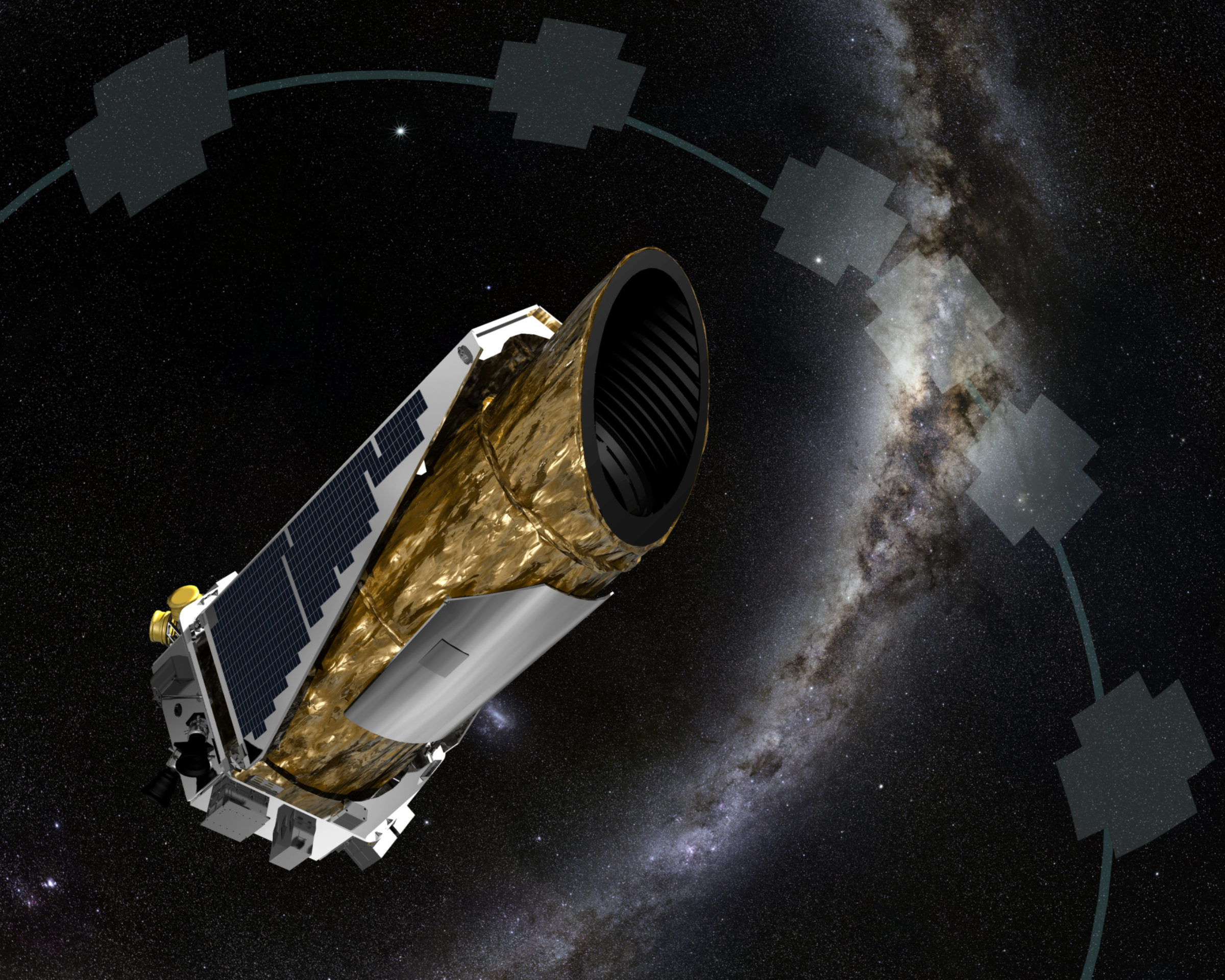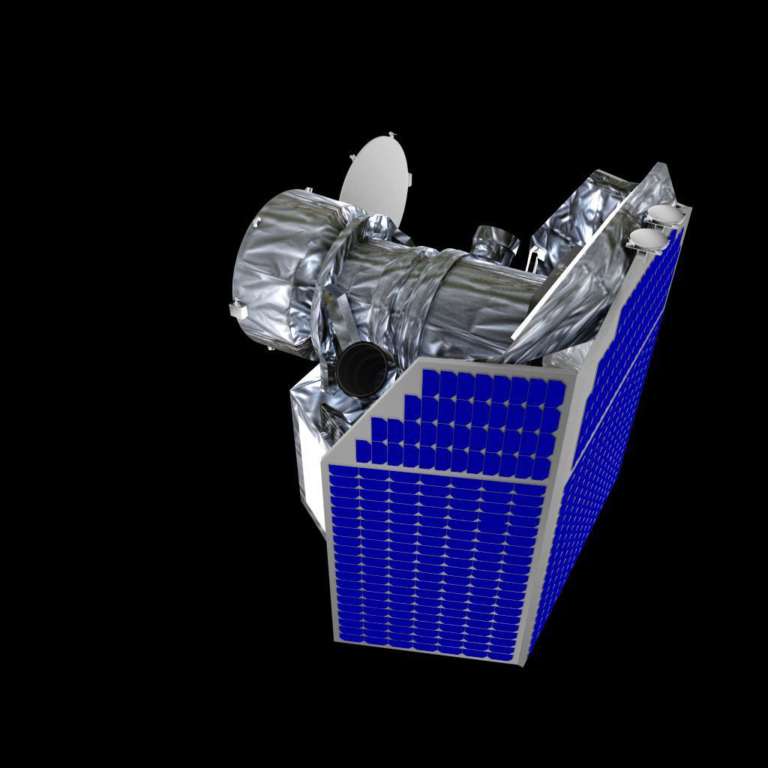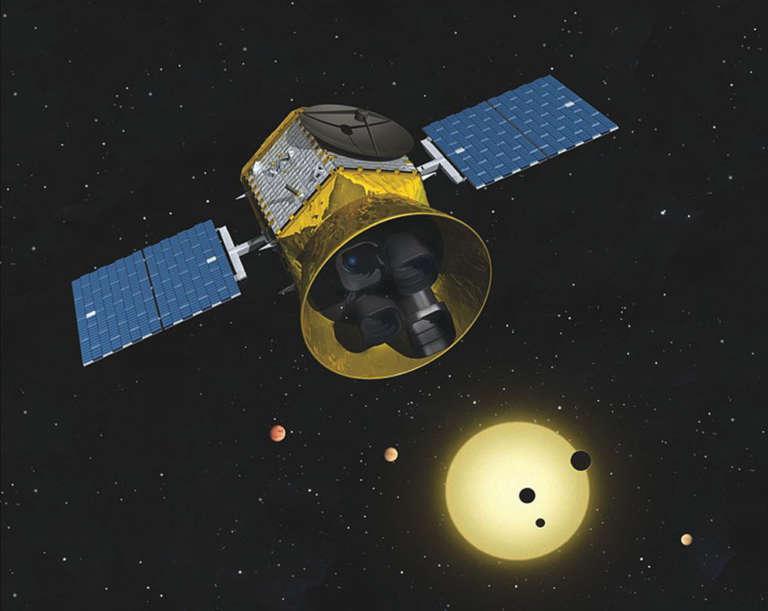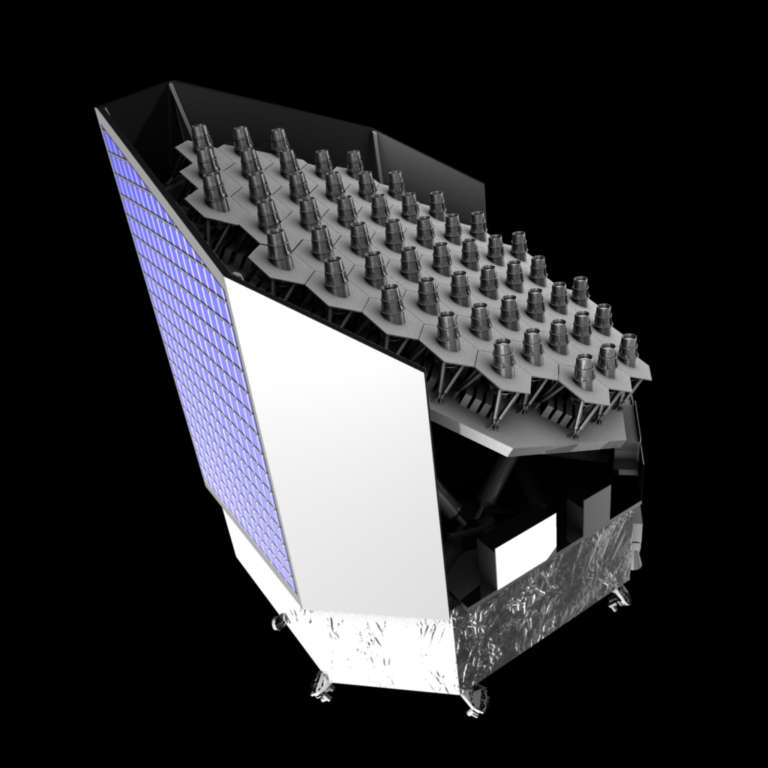Meg Schwamb • Mar 04, 2016
Continuing the Hunt for Exoplanets
Our understanding of exoplanets—or extrasolar planets (planets outside of our solar system)—has completely transformed since the discovery of the first planet orbiting a main-sequence star in 1995 (51 Pegasi b). We have learned about the existence of hot Jupiters (large gas giants orbiting extremely close their host stars with orbital periods of ~8 days) and the abundance of super-Earth/mini-Neptune sized-planets on orbits shorter than 1 year; both these types of planets seem (to date) to be absent from our solar system. Now, thanks to NASA's Kepler mission, we know that exoplanets are abundant in our Galaxy. As the field moves into the third decade, I thought I'd highlight some of the upcoming space-based exoplanets missions.
Today a suite of techniques are employed to discover exoplanets: direct detection, transit, radial velocity, microlensing, and astrometry. You can find a great primer on these methods here. The next generation of dedicated space missions are primarily focusing on finding a sample of planets for comparative planetology where we can study the composition of the interior and atmospheres of these planets and how they compare to bodies in our solar system. Many are aiming to find targets where multiple detection techniques can be used to help probe the internal structure and makeup of these worlds:

K2
K2 is the reborn NASA Kepler mission and the only active transit mission I've included on this list. With the loss of a second reaction wheel that helped control its pointing, the main Kepler mission ended in May 2013. The aim at that time was to monitor 170,000 stars in a field close to the plane of the galaxy between the constellation of Cygnus and Lyra for the periodic dip in light caused by transiting planets. Now, reborn as the K2 mission, the spacecraft uses the Sun as the 'missing third wheel’. K2 will stare at a field on the plane of the Earth's orbit (known as the ecliptic) and observe 7 to 10 thousand targets for roughly 3 months before having to repoint the spacecraft to prevent the Sun's light from hitting the mirror and to prevent the solar panels from not being illuminated. This new observing scheme goes beyond just a transiting exoplanet search. K2 has also observed variable stars and known solar system bodies.
Starting in April, K2 will attempt a one-field 90-day microlensing gravitational campaign looking for planets in a joint ground/space campaign. The separation between Earth and Kepler is sufficient that the two should see slightly different light curves for the brightening of the star and signature spike due to the presence of the planet during the lensing event. This breaks known degeneracies in the estimated planet properties, and is expected to provide a bumper crop of planets in a masses and distance ranges that current transit searches don’t probe. This massive ground-based campaign is planned and soon to be underway in April with the start of K2 campaign 9.
It’s an exciting time for the K2 mission, but with the loss of the reaction wheel, Kepler is reliant on its thrusters for pointing, and living on borrowed time. The exhaustion of the fuel onboard the spacecraft will end the K2 mission likely some time in 2017 or 2018.

CHEOPS - CHaracterising ExOPlanet Satellite (CHEOPS)
CHEOPS is an ESA/Switzerland space mission aimed at better studying known exoplanet systems around bright stars. It also is the first S-class (small class) mission ESA has ever undertaken. This is the equivalent of a NASA Small Explorers (SMEX) mission. Unlike Kepler and K2, the aim of CHEOPS is not to find new exoplanets, but instead it will be targeting known planet-hosting stars one at a time. The spacecraft is looking for the potential transits of the planets about a known host star. These planets were found with the radial velocity technique and thus have known masses. CHEOPS is expected to provide radii estimates with a ~10% accuracy for super-Earth to Neptune mass planets. For those solar systems nearly edge-on to Earth, we'll be able to combine the size measurements from CHEOPS with the mass measurements from the radial velocity observations to obtain the bulk density and composition of these planets. CHEOPS provides the first opportunity to gather a sample of planets where we already know of their existence and their masses from previous ground-based observations. CHEOPS is expected to launch at the end of 2017 with a primary mission lasting 3.5 years.

TESS - Transiting Exoplanet Survey Satellite
TESS is NASA's next generation transit search mission. Like CHEOPS, TESS is going after the brightest stars in the sky. TESS will monitor roughly 2000 square degrees of the sky at any given time. For most of that field-of-view, the spacecraft will observe a select set of stars with a measurement of the stars’ brightness every minute for 27 days. Thus, TESS will be concentrating on the detection of short-period planets with orbits closer in than Mercury is to our Sun around the brightest 200,000 main-sequence stars over its two-year primary mission. Very small regions at the ecliptic poles will be visible in multiple TESS fields with observational baselines of 6 months to a year, enabling the search for planets in Earth-like orbits around solar-type stars. However, the vast majority of TESS discoveries will be short-period terrestrial and gas giant planets orbiting close to their parent stars.
TESS’s predecessor, the Kepler mission, has found a bounty of exoplanets, but most of the stars monitored in the prime Kepler mission were 12–14th magnitude. Unfortunately, these stars are too faint to obtain radial velocity measurements from the ground, even for those with giant planets. So, most of the planets discovered by Kepler do not have mass measurements. The aim of TESS is search the full sky for exoplanets around the very brightest stars, which will become candidates for further radial velocity study. This means a large sample of planets where we'll get their mean densities. This is incredibly exciting because we get to see what they're made of and how insolation from the parent star impacts their composition. In addition, we'll be able to compare their compositions to those for the best studied planets we know of: the planets residing in our own solar system.
TESS will also produce the first set of rocky planets around the brightest stars in the sky. These objects will be our best chance of getting densities of terrestrial planets outside the solar system. Radial velocity instruments push toward the cm/s resolution needed to spot the pull of an Earth-sized planet about the Sun. Currently, the best spectrographs can achieve 0.5–1 m/s resolution for the very brightest stars, but they’re pushing to increasing sensitivity toward obtaining mass measurements of rocky planets.
In addition to the science-grade data form TESS, there’s another really interesting component of the mission. The spacecraft will save an engineering frame of the entire ~2000 square degree field field of view every 30 minutes. These will also be downloaded and sent to Earth along with the light curves of the actual target stars. This is the same cadence as the original Kepler mission but 400 times more sky than Kepler ever covered! I fully expect that there will be a bonanza of interesting science and exoplanet discoveries to come out of mining those housekeeping/engineering frames from TESS in addition to their main science data. TESS is expected to launch in mid-2017.

PLATO - PLAnetary Transits and Oscillations of stars
PLATO is one of ESA’s M-Class (medium size) space missions. One of its aims is to find a sample of rocky planets in the habitable zones of the brightest stars in the sky—the region in an extrasolar system where a planet could retain liquid water. I like to think of PLATO as Kepler or TESS on steroids, with a whopping 34 telescopes side-by-side simultaneously monitoring a total of ~2000 square degrees on the sky for transits. This behemoth isn't expected to launch for another 8 years, so it will build on the work on the missions above. 32 of those telescopes will monitor the brightness of stars fainter than 8th magnitude every 25 seconds, with two telescopes working in a fast readout mode measuring extremely bright 4–8th magnitude stars with a cadence of 2.5 seconds! That's incredibly fast!
PLATO expects to be able to put precise ages with 10–20% errors on many of the planet host stars it monitors by being able to detect and measure the internal oscillations within the stars and their rotation rates through changes in their brightness over time. Kepler/K2 was able to do this for only a handful of stars with planets. PLATO should significantly expand this sample. As a complement to TESS, PLATO will have long baseline observations pushing out to cooler parts of planetary systems where liquid water could be present on the surfaces of newly discovered rocky worlds.
Now that the Kepler mission is gone, it’s going to be PLATO that will detect the largest crop of planetary systems with planets located at distances pushing out ~0.5 AU from Sun-like stars. PLATO will spend its first two years monitoring a patch of ~2000 square degrees before moving on to another selected field for the same time span. Like TESS, most of these planets discovered will be able to obtain mass measurements from the ground. Later, PLATO is expected to enter a more TESS-like cadence imaging many fields across the sky for only a few months before moving on to a new region.
Support our core enterprises
Your support powers our mission to explore worlds, find life, and defend Earth. You make all the difference when you make a gift. Give today!
Donate

 Explore Worlds
Explore Worlds Find Life
Find Life Defend Earth
Defend Earth

